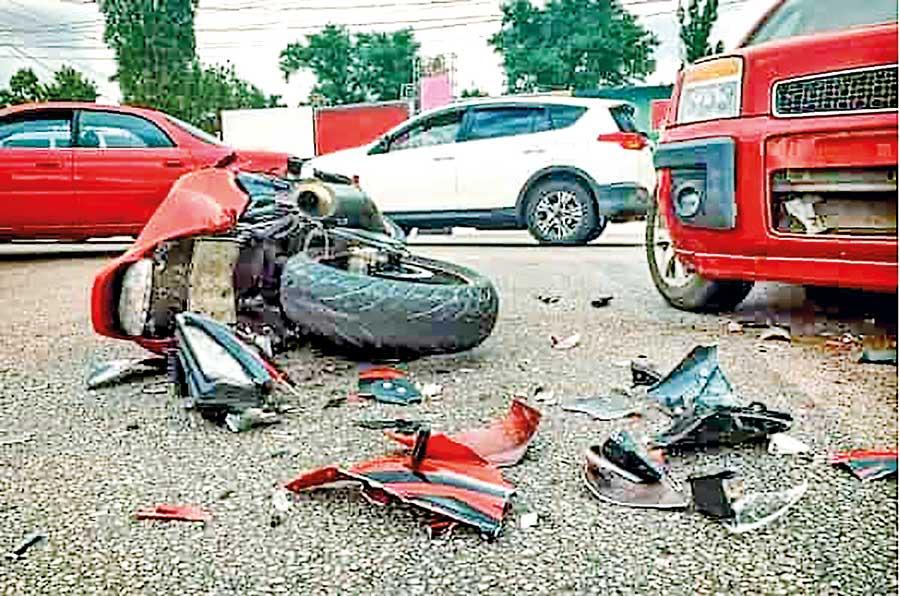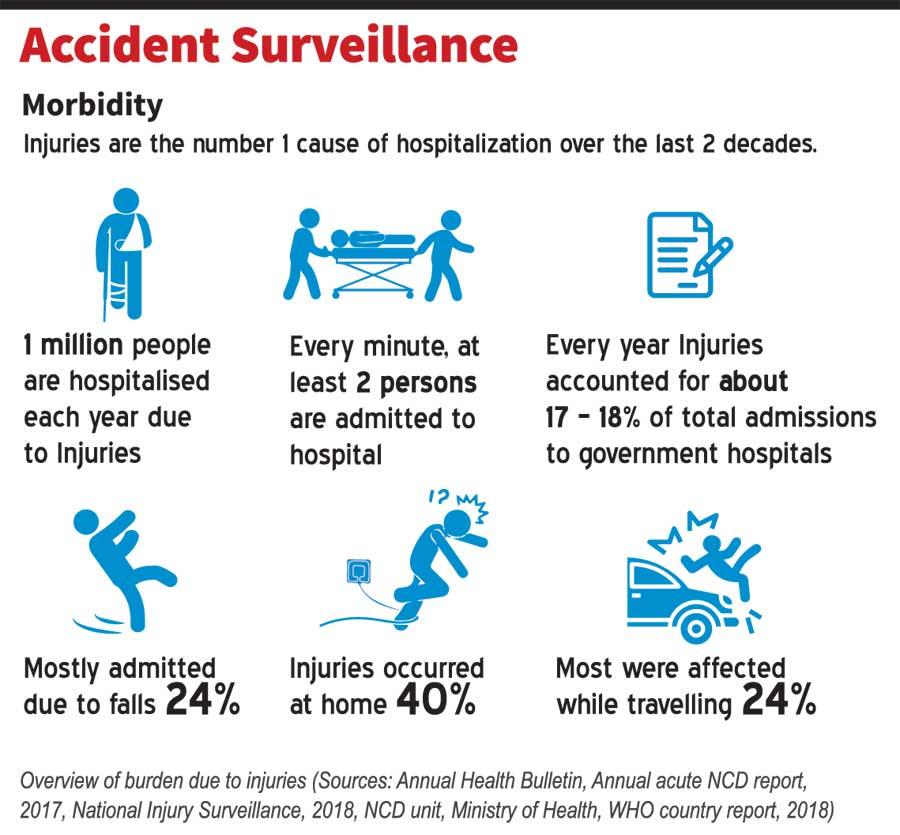28 Jun 2023 - {{hitsCtrl.values.hits}}

Injuries are the number one cause of hospitalization over the last two decades in Sri Lanka
According to the Directorate of Non Communicable Diseases Ministry of Health about one million people are hospitalised due to injuries caused by accidents. Injuries through accidents are the number one cause of hospitalization over the last two decades and these injuries kill at least 38 Sri Lankans a day; about three individuals every two hours.
hospitalised due to injuries caused by accidents. Injuries through accidents are the number one cause of hospitalization over the last two decades and these injuries kill at least 38 Sri Lankans a day; about three individuals every two hours.
By taking this into account Daily Mirror spoke with Consultant Community Physician at the Department of Non-Communicable Diseases of the Ministry of Health Dr. Samitha Sirithunga.
“Before Covid - 19 there was a gradual increase in injuries through accidents and it was more than 1 million. During the pandemic- due to the strict restrictions- there was a reduction of all admissions to the hospitals.
According to the latest available statistics there were around 1.3 million cases of injuries through accidents to people being reported. However during the pandemic this was reduced to 1.1 million,” explained Dr. Sirithunga.
“Every one out of six patients is admitted due to injuries. Though there is a decrease in injuries when compared with the other categories this decrease is not significant,” Dr. Sirithunga added.
“Children like moving objects and they love eye-catching things. They like to experiment with new things. So when we grow ornamental plants we must be aware because children might try to taste those leaves and seeds, but they are poisoned,”
- Dr. Samitha Sirithunga Consultant Community Physician at the Department of Non-Communicable Diseases of the Ministry of Health
Those injured at home were mostly children, adolescents, youth and young adults. Eighty percent (80%) of the injuries suffered at home occurred during the day time; between 6 am to 6 pm. Apart from that most victims were reported with upper and lower limb injuries. Superficial injuries were observed in more than 50% of home injury victims. When the gender distribution of home injury victims is considered 59% are males. In both genders, children, adolescents, teenagers and young adults were affected and their ages ranged from 6-60.
Seventy nine percent (79%) of reported home injuries through accidents occurred during the day time while 21% of the injuries occurred between 6pm to 6am; out of which 17% occurred between 6pm and mid night.
“People must prevent themselves from home injuries. First we must identify the types of injuries that can take place at home and after identifying those we must prevent ourselves from those injuries. People must be aware of the first aid part too. Examples for such injuries are home based drowning, animal bites, fallings etc. The village is a beautiful place, but the water wells should be protected because when we consider about our past our water wells were well protected; to avoid home-based drowning incidents such places should be protected and parents must be careful when they wash their children. And also there are new ornamental plants. Children like moving objects and they love eye-catching things.
They like to experiment with new things. So when we grow ornamental plants we must be aware because children might try to taste those leaves and seeds, which is dangerous as they could be poisonous,” added Dr Sirithunga.
Dr. Sirithunga’s suggestions and concerns about people needing to take proper actions to protect themselves spells out the fact that Sri Lanka’s health authorities must do more to educate the public about proper first aid practices and general safety guidelines. Adhering to road rules when driving can also reduce accident injury figures. This in turn would also help television audiences at home see less gruesome visuals of casualties on the road when viewers switch on the TV to watch the news at night.

10 Jan 2025 26 minute ago
10 Jan 2025 31 minute ago
10 Jan 2025 2 hours ago
10 Jan 2025 2 hours ago
10 Jan 2025 2 hours ago